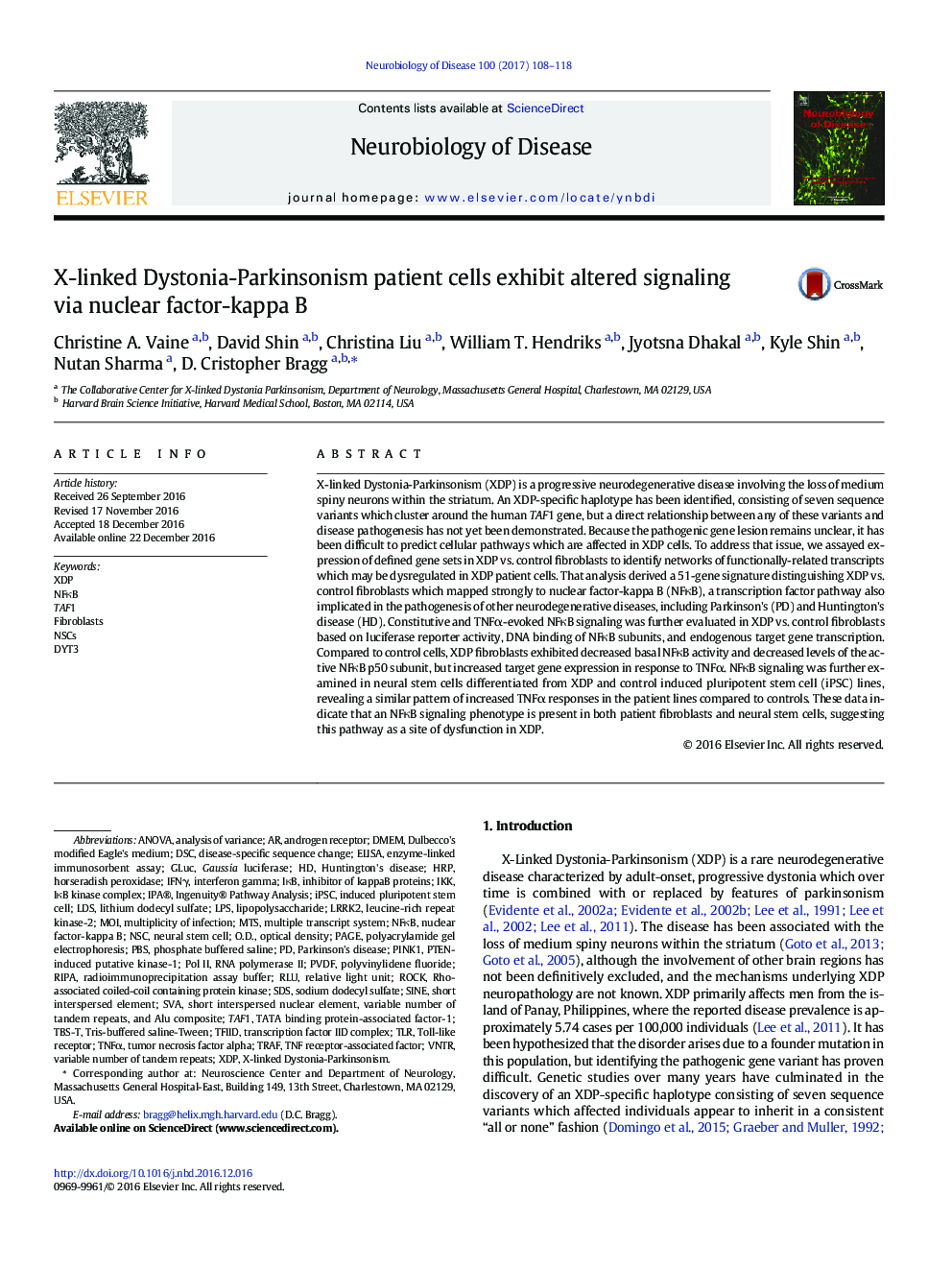| Article ID | Journal | Published Year | Pages | File Type |
|---|---|---|---|---|
| 5630670 | Neurobiology of Disease | 2017 | 11 Pages |
X-linked Dystonia-Parkinsonism (XDP) is a progressive neurodegenerative disease involving the loss of medium spiny neurons within the striatum. An XDP-specific haplotype has been identified, consisting of seven sequence variants which cluster around the human TAF1 gene, but a direct relationship between any of these variants and disease pathogenesis has not yet been demonstrated. Because the pathogenic gene lesion remains unclear, it has been difficult to predict cellular pathways which are affected in XDP cells. To address that issue, we assayed expression of defined gene sets in XDP vs. control fibroblasts to identify networks of functionally-related transcripts which may be dysregulated in XDP patient cells. That analysis derived a 51-gene signature distinguishing XDP vs. control fibroblasts which mapped strongly to nuclear factor-kappa B (NFκB), a transcription factor pathway also implicated in the pathogenesis of other neurodegenerative diseases, including Parkinson's (PD) and Huntington's disease (HD). Constitutive and TNFα-evoked NFκB signaling was further evaluated in XDP vs. control fibroblasts based on luciferase reporter activity, DNA binding of NFκB subunits, and endogenous target gene transcription. Compared to control cells, XDP fibroblasts exhibited decreased basal NFκB activity and decreased levels of the active NFκB p50 subunit, but increased target gene expression in response to TNFα. NFκB signaling was further examined in neural stem cells differentiated from XDP and control induced pluripotent stem cell (iPSC) lines, revealing a similar pattern of increased TNFα responses in the patient lines compared to controls. These data indicate that an NFκB signaling phenotype is present in both patient fibroblasts and neural stem cells, suggesting this pathway as a site of dysfunction in XDP.
